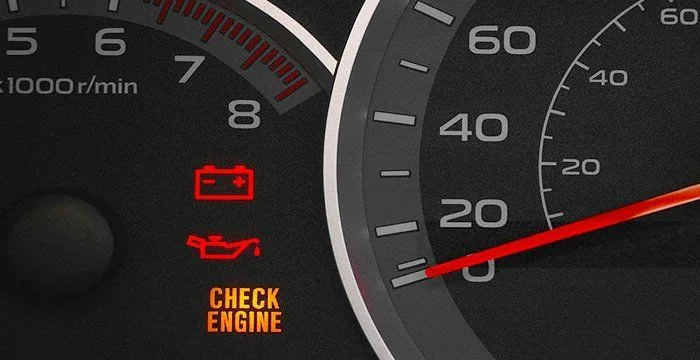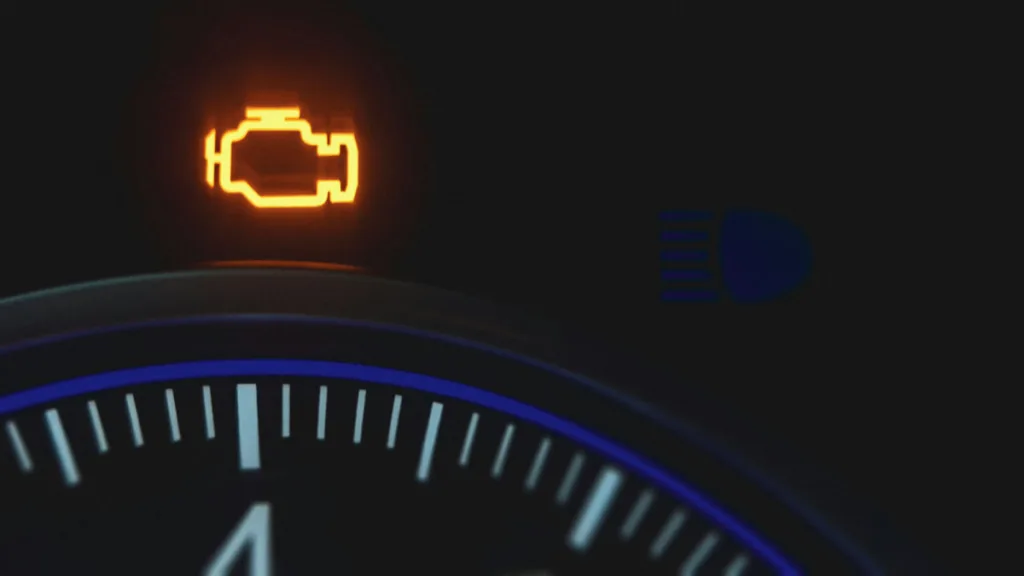Curious about why your check engine light flashing when key is on position? You’re not alone. Many drivers wonder about this sudden illumination and whether it signals a problem.
Well, let’s clear the air. When you insert the key and turn it to the on position, that flashing light isn’t cause for immediate concern. In fact, it’s often just a routine check—a way for your vehicle to confirm that everything’s in working order. But there’s more to it than meets the eye.
In this guide, we’ll dive into the details behind the check engine light flashing when key is on position, shedding light on what it means and when it might indicate a deeper issue. So, let’s demystify this common occurrence together.
Why Check Engine Light Flashing When Key Is On Position
When you turn the key to the On position and notice your check engine light flashing, it can be quite puzzling.
But fear not, as this is often just a routine check to ensure the light is working properly when you start your engine. Essentially, your car is giving its internal systems a quick once-over before you hit the road. This check engine light flashing when the key is on position scenario is like a little test run for the light bulb, making sure it’s ready to alert you to any potential issues.
However, there are times when this flashing isn’t just a harmless check. It could actually be signaling an underlying problem with your vehicle that needs attention. So, it’s crucial not to ignore it entirely. While occasional flashing during startup might not be cause for immediate concern, persistent or frequent flashing could indicate issues like engine misfires, faulty sensors, or problems with the emissions system.
To determine whether your flashing check engine light warrants action, it’s best to pay attention to any accompanying symptoms, such as strange noises or changes in engine performance.
Additionally, getting your vehicle’s diagnostic trouble codes (DTCs) scanned by a professional mechanic can provide valuable insights into the specific issue triggering the light.
In essence, while a check engine light flashing when the key is on position may seem alarming at first, it’s often just a routine part of your car’s startup process.
However, staying vigilant and addressing any persistent flashing can help prevent potential problems down the road and ensure your vehicle remains in top condition.
What to Do If the Check Engine Light Flashes When the Key Is in the On Position

If you notice your check engine light flashing when the key is in the on position, don’t panic. Contrary to what you might think, this is actually a good sign. It’s a routine test to ensure that your check engine light and other engine-related lights are working properly.
However, if the light doesn’t come on at all, that’s when you should be concerned. It could mean that the bulb is burned out, leaving you unaware of potential engine issues. In such cases, replacing the bulb is a simple and inexpensive fix.
For those who’ve recently purchased a used car, the absence of the check engine light when you turn the ignition could indicate tampering with the bulb. This should raise a red flag, prompting you to investigate further.
Remember, if the check engine light stays on after the engine starts running, it could indicate a genuine issue with the engine. In such instances, it’s wise to address the problem promptly to prevent any potential damage.
Why Isn’t the Check Engine Light Coming On When the Key Is in the On Position?
It’s concerning when your check engine light (CEL) fails to illuminate upon turning the key to the On position. Several reasons could explain this issue, each requiring different solutions.
Burned-Out CEL Bulb
Like any other bulb, the check engine light bulb has a lifespan and can eventually burn out. When this occurs, the bulb won’t illuminate when the key is turned to the On position. Replacing the old bulb with a new one restores the functionality of the CEL. This task can be performed independently or by hiring a mechanic.
Blown Ignition Switch Fuse

The ignition switch fuse, located in the battery compartment, may blow if an excessive electrical charge is transmitted to the Engine Control Unit (ECU). In such cases, the ECU ceases to function correctly, affecting the CEL. Checking the ignition switch fuse is crucial if your CEL doesn’t light up.
Other Causes
Various other factors could prevent the check engine light from illuminating when the key is turned to the On position. These include issues with wiring or connections related to the CEL circuit, malfunctioning components within the ECU, or a faulty instrument cluster.
Diagnosing and resolving these underlying issues might necessitate the expertise of a qualified mechanic, who can use diagnostic tools to identify the problem and perform necessary repairs.
What to Do If the Check Engine Light Doesn’t Turn Off After Starting the Engine

If your check engine light remains illuminated even after you’ve started the engine, it’s essential to address the issue promptly. This persistent illumination could indicate an underlying problem with your vehicle that requires attention.
One potential reason for the check engine light staying on is a continuing issue with the vehicle’s engine or emissions system. It’s crucial to diagnose and address this issue to prevent further damage to your vehicle and ensure its continued reliable operation.
To fix this problem, try doing the following:
- Check for Immediate Issues: Look for any obvious signs of engine trouble, such as unusual noises or rough idling.
- Scan for Diagnostic Trouble Codes (DTCs): Use a diagnostic scanner to retrieve any DTCs stored in the vehicle’s computer system. These codes can give you useful information about why the check engine light is on.
- Seek Professional Assistance: If you’re unable to diagnose or address the issue yourself, consult a qualified mechanic or auto repair shop for expert assistance.
- Address Any Identified Issues: Once the underlying problem has been identified, take appropriate action to resolve it, whether it involves repairing or replacing faulty components.
By acting quickly and efficiently, you can make sure your car stays in good shape and prevent any problems from getting worse.
When to Worry About a Flashing Check Engine Light
So, when does a flashing check engine light become a cause for concern? The answer is simple: when it starts flashing while your engine is running. Unlike a steady check engine light, a flashing one indicates a critical problem that demands immediate attention.
If you encounter a flashing check engine light while driving, it’s crucial not to ignore it. Continuing to operate your vehicle could exacerbate the issue and lead to significant damage.
Instead, pull over safely if possible and seek assistance from a mechanic. They can perform a thorough diagnostic to pinpoint the problem and prevent further complications.
Common causes of a flashing check engine light include a loose fuel gas cap, faulty catalytic converter, oxygen sensor issues. While some of these issues may seem minor, they can escalate into serious problems if left unchecked.
If you notice a flashing check engine light when the key is in the on position, it could signify a serious issue with your car’s engine. By addressing the problem promptly and not ignoring the warning signs, you can protect your vehicle from further damage and ensure your safety on the road.
FAQs About Check Engine Light Flashing When Key Is On Position

What does it mean if the check engine light stays on after starting the engine?
A continuously illuminated check engine light suggests an ongoing problem that needs attention. Use an OBD-II scanner to retrieve diagnostic trouble codes for further investigation.
Why is my check engine light flashing when I turn the key to the On position?
The flashing check engine light is usually a bulb test to ensure it’s functioning. It should go off shortly after starting the engine.
Can a burned-out check engine light bulb cause it to flash?
Yes, a burned-out bulb can prevent the check engine light from illuminating properly, including flashing when the key is turned to the On position.
How much does it cost to fix a flashing check engine light?
The cost varies depending on the underlying issue. Simple fixes like replacing a bulb may be inexpensive, while more complex issues could cost more to repair.
What should I check if my check engine light doesn’t come on when the key is in the On position?
Start by checking the bulb, then inspect the ignition switch fuse and wiring related to the check engine light circuit.
Conclusion About Check Engine Light Flashing When Key Is On Position
In conclusion, understanding why the check engine light flashes when the key is in the on position is essential for every driver.
While it may initially cause concern, especially if it happens while the engine is running, knowing when to be worried can prevent further issues. Whether it’s a loose gas cap or a more serious engine problem, addressing the flashing light promptly is crucial for vehicle health and safety.
By following the guidelines outlined in this article, you can navigate the situation with confidence, ensuring that your vehicle remains in top condition. So, the next time you encounter the check engine light flashing when key is on position, remember to stay informed and take action as needed.
RECOMMENDED POST Common Problems After Engine Replacement: Ultimate Guide
FOLLOW US
